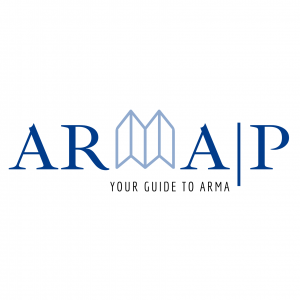Richard Bass is an author for the A-R Music Anthology. He has written an ARMA textbook article called “Harmony and Key Relationships in Romantic Music,” which thoroughly analyzes the harmony of Romantic Music alongside the conventions of the Classical Period. He has a great depth of research in nineteenth-century music, and is also recognized for his work on the music of composer George Crumb. Bass has an extensive background as a pianist and has recently retired as a professor of music theory at the University of Connecticut.

We recently sat down with Richard to talk about some of his work on this article, and how he has used the A-R Music Anthology in the classroom. Keep reading to learn more!
Questions & Answers
In your article “Harmony and Key Relationships in Romantic Music,” you are clear and detailed in describing the unique tonal aspects of Romantic music, while recognizing its closeness to the harmonic language of the Classical period. As a former music theory instructor, how would you bring this conversation from the page into the classroom?
I’ve actually incorporated these materials into my teaching for decades. If you look at all the harmony textbooks out there, you’ll see that almost everything in them is focused on Classical period harmony. The chapters that deal with chromaticism include principally harmonies and progressions you find in the music of Mozart and early Beethoven, or even earlier composers. I mean, students think that after taking two years of theory and studying things like augmented sixth chords and enharmonic modulation that they’re in a position to understand harmony in the whole range of tonal music, but then they come across progressions in nineteenth-century music that just aren’t covered in what they’ve been taught. Even those texts that do try to include some more specifically Romantic practices do it in a very selective way, choosing just a few isolated devices to discuss. So during the course of my 45-plus years of teaching theory I continued to try to find clear ways of explaining harmonic content that lies outside the basic framework of Classical tonal practice. I introduced a lot of these things to undergraduate students in my form and analysis classes, and for around 25 years I also taught a graduate seminar on the topic of late nineteenth-century harmony. I brought many of the materials from that course together for the ARMA article, and in fact one of the main reasons I was interested in writing the article was to preserve that content and make it widely available, because I don’t know of any other published pedagogical material that deals with a similarly broad range of Romantic procedures in one place. There are of course texts that take a more Schenkerian approach to harmony, which deals very well with tonal structure in much Romantic music as well as that of earlier periods, but if you’re interested in specific kinds of harmonic progressions and relationships then you need something that does more than just absorb them into deeper levels of structure. Sometimes it’s those kinds of progressions you hear in Romantic music that give you goosebumps or take your breath away (that’s one of the reasons it’s called “romantic”) and those things deserve to be studied in their own right even if they’re just surface-level features. Then there are all sorts of relevant studies in the scholarly literature, but they deal mostly with individual aspects of Romantic harmony and not very much with how those things work together with each other and alongside content carried over from Classical harmonic style. So my hope is that this ARMA article can serve as a resource for those who want to teach and learn about Romantic harmony, and also to offer some analytical applications. A lot of the music examples I introduce are ones I used in my seminars, and I also included others that I extracted from the ARMA Anthology, which was very helpful in balancing out the content and in illustrating the broad applicability of the approach.
What are your takeaways in creating such a thorough and comprehensive article? Do you have a vision for how it might be used in the classroom?
Probably the biggest issue in teaching Romantic harmony is that you need to start with students who have a strong grounding in Classical harmony, so they can understand the differences. Not all students after two or even more years of theory really achieve the necessary level of preparation, and that is also true of students who enter graduate programs. So one of the things I felt I had to do in this article was include an efficient means of reviewing the basic operations of Classical harmonic progressions: not voice leading, not part-writing (although these are of course essential topics), and not forcing everything into functional categories of tonic, dominant, and subdominant or talking about root movement down a fifth, up a second, and so on. Instead, I organized things into a kind of harmonic syntax that helps to distinguish between Classical norms and Romantic innovations as a starting point for the harmonic analysis.
This approach of reviewing Classical norms while introducing Romantic harmony is very effective in your writing. Towards the beginning of your article, you refer to the structure of Classical harmony as a model from which to elaborate, similarly to that of Romantic harmony. How do you feel this relationship between Classical and Romantic harmony developed throughout the Romantic period?
In the field of music theory, there has been some speculation that perhaps Classical and Romantic harmony are not very closely related–that Romantic harmony is a kind of “second practice” within the tonal music sphere. It seems to me that the separation between the two approaches is mostly just conceptual in nature, because so many of the conventions of Classical harmony maintain a strong presence in the Romantic repertoire. Chords are still built in thirds, there are still dominant-to-tonic types of progressions, and we can perceive the music as being “in a key” much of the time. Whenever my students set out to analyze a Romantic piece harmonically, I encouraged them to start by doing as much as possible using a conventional approach, and then make a second pass to figure out what was going on with the progressions that didn’t seem to fit in. In most cases they found that the conventional progressions greatly outnumbered the exceptional ones. The way Romantic music is constructed makes it clear that most composers of that period were principally interested in expanding their harmonic palette, opening up a wider variety of key relationships and exploiting the effects of ambiguity rather than trying to replace or reject existing tonal practices. Such fundamentally different approaches to pitch structure arose later on, with the various “isms” of the twentieth century.
Have you used your article as a reference in your courses? If so, how did you bring this into the classroom?
I’m no longer teaching classes myself, but I have heard from a few other individuals that they are using this ARMA article as a resource. In particular, a professor who is one of my former students is using it for assigned readings in her own seminar in late nineteenth-century analysis, and she recently put out a pedagogical podcast for the Society for Music Theory dealing with how her students prepared their final class projects.
It is clear that you have an abundance of knowledge to share in relation to the Romantic Period. If you were to revise your article, what might you add?
So far, I’m pretty happy with the content of the article as it stands, although I really would like for it to use a better edition of the score for the final piece that I discussed (a song by Richard Strauss), just so that the relationship between the harmonic analysis and the text is clearer. That change was supposed to take place after the article was already out, but I guess it was just a task that never made it off the back burner. There’s always more one could add, but I think it would be just as beneficial for instruction or self-guided study to explore some of the other publications I cite in the article’s footnotes and bibliography.
in closing...
What new possibilities in your own teaching has this interview revealed to you? Have you tried something similar in your own classroom? Send us a message and share your experiences with ARMA. We love hearing from you!

